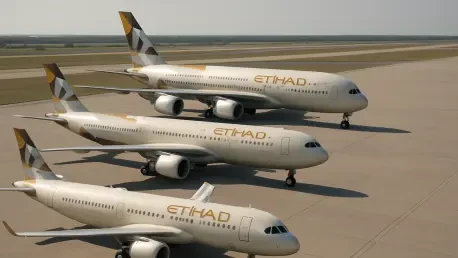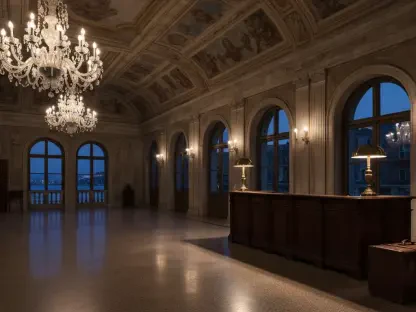Allow me to introduce Katarina Railko, a seasoned hospitality expert with deep roots in the travel and tourism industry. With her sharp insights into entertainment, events, and large-scale expos like the Dubai Airshow, Katarina brings a unique perspective on how airlines like Etihad Airways are shaping the future of aviation through strategic fleet expansions. In our conversation, we explore Etihad’s ambitious moves to modernize its widebody fleet with new Airbus aircraft, the balance between operational efficiency and sustainability, and the airline’s vision for growth across regional, long-haul, and cargo markets.
Can you walk us through what’s driving Etihad Airways to make such a significant investment in new Airbus aircraft at the Dubai Airshow?
Certainly, Olivia. Etihad’s decision to expand its fleet with Airbus aircraft is rooted in a clear vision for growth and modernization. This isn’t just about adding more planes; it’s about strategically positioning the airline to meet rising demand across different segments of their network. They’re looking to enhance capacity in regional, mid-range, and long-haul markets while also bolstering their cargo operations. It’s a bold step to stay competitive in a fast-evolving industry, ensuring they have the right tools to deliver on efficiency and passenger expectations.
Let’s dive into the choice of the A330neo for regional and mid-range routes. What makes this aircraft such a strong match for these specific markets?
The A330neo is a game-changer for routes that don’t require ultra-long-haul capabilities but still demand efficiency and flexibility. Its range of about 8,100 nautical miles allows Etihad to cover a wide swath of destinations in the Middle East, Asia, and parts of Europe effectively. What stands out is the 25% reduction in fuel burn compared to older models, which translates to lower operating costs and a smaller environmental footprint. Plus, the updated cabin design improves the passenger experience, which is crucial for staying competitive on these busy routes.
Speaking of long-haul travel, Etihad has bumped up its order for the A350-1000 to a total of 27. What sets this aircraft apart for those extended journeys?
The A350-1000 is really the pinnacle of long-haul travel technology right now. With a range of up to 9,700 nautical miles, it can connect Abu Dhabi to virtually any major global hub without a hitch. Its advanced aerodynamics and lightweight materials, paired with cutting-edge Rolls-Royce engines, cut fuel burn and emissions by 25% compared to older aircraft. For passengers, that means quieter cabins and more space, which is a big deal on flights lasting 12 or more hours. It’s about delivering comfort without sacrificing efficiency.
Etihad is also deepening its commitment to cargo with the A350F freighter, now up to 10 units. Why is this particular aircraft so critical for their cargo division?
Cargo demand has skyrocketed globally, and Etihad is seizing the opportunity to expand in this space. The A350F is uniquely positioned with its massive main deck cargo door and capacity, making it ideal for handling large and diverse shipments. What’s also key is its compliance with future emissions standards set by ICAO for 2027. This forward-thinking design ensures Etihad can grow its cargo operations sustainably, meeting both market needs and regulatory expectations without facing costly retrofits down the line.
I noticed Etihad is leasing nine additional A330-900s rather than purchasing them outright. Can you explain the strategy behind opting for leasing in this case?
Leasing offers a level of agility that outright purchases sometimes can’t match. For Etihad, bringing in these A330-900s through a partner like Avolon allows them to scale up capacity quickly without the heavy upfront capital investment. It’s a smart move for managing cash flow while still meeting immediate operational needs. Plus, leasing provides flexibility—if market dynamics shift, they can adjust their fleet size or composition more easily than if they owned the aircraft outright.
Sustainability seems to be a big focus with these new aircraft, given their fuel efficiency and lower emissions. How central is environmental responsibility to Etihad’s broader vision?
It’s absolutely a cornerstone of their strategy. Both the A330neo and A350 family reduce fuel burn and CO₂ emissions by 25% compared to previous generations, which is huge for an airline looking to balance growth with environmental impact. These aircraft can also operate with up to 50% Sustainable Aviation Fuel, with a path to 100% by 2030. For Etihad, this isn’t just about meeting regulations—it’s about leading the charge in making aviation greener while still delivering top-tier service across their network.
Looking ahead, what’s your forecast for how these fleet expansions will shape the future of aviation in the UAE and beyond?
I think we’re going to see a ripple effect from Etihad’s moves. Their investment in modern, efficient aircraft like the A330neo, A350-1000, and A350F positions the UAE as a powerhouse in global aviation, not just for passenger travel but also as a cargo hub. This fleet modernization will likely push competitors in the region to accelerate their own upgrades, driving innovation and sustainability across the board. Beyond that, it reinforces the UAE’s role as a critical connector between East and West, potentially reshaping traffic flows and partnerships on a global scale.









